2016 Architecture at Zero winners design clean-energy housing for San Francisco State University
By Justine Testado|
Monday, Dec 12, 2016
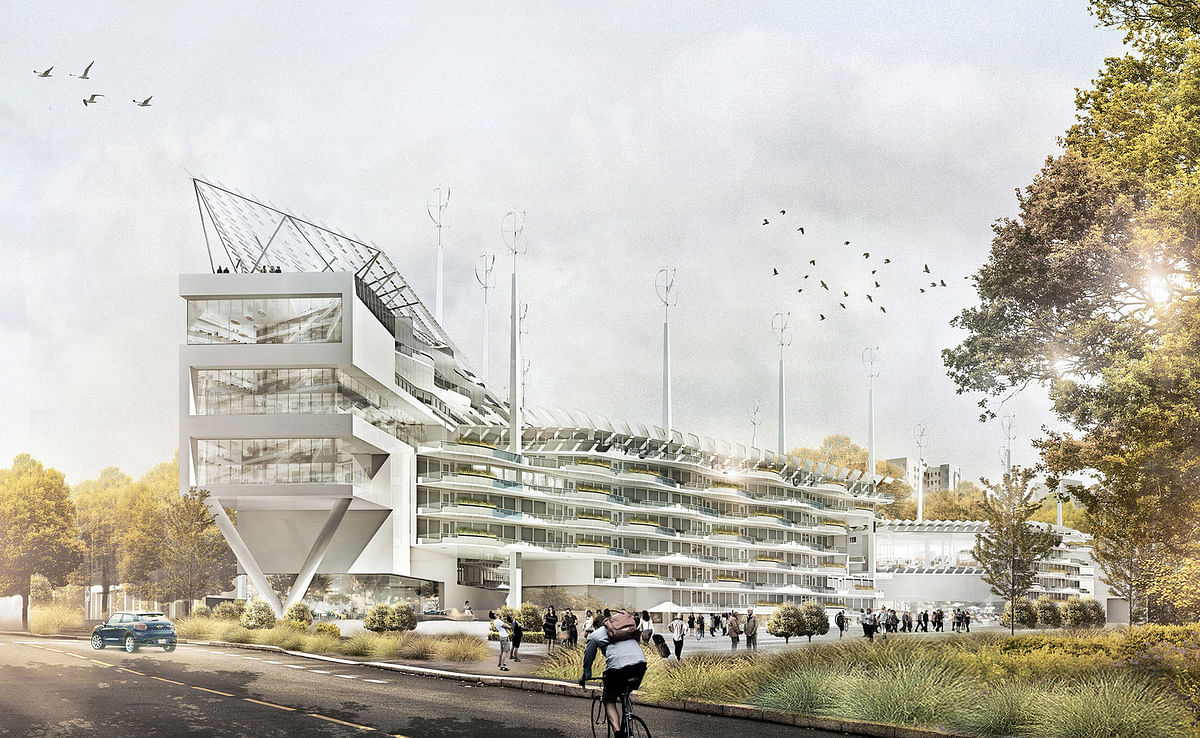
Related
Now in its sixth edition, the 2016 Architecture at Zero competition challenged student and professional teams to design innovative zero net energy student campus housing for another San Francisco-based school: San Francisco State University. Out of 60 hopeful submissions — the largest number that the competition has received by far, a total of six student and professional winners won top awards.
Winners received either Honor, Merit, or Citation/Special Recognition awards (with Honor ranked as the highest).
Have a look at the winning entries below.
PROFESSIONALS:
(cover image) Merit Award: NEXUS by Dialog | Vancouver, Canada
Project Manager, Lead Designer, Energy Modelling: Jason Heinrich
Project Manager, Lead Designer: Geoff Cox
Designers: David Tran, Esteban Matheus, Won Kang, Caspar Look, Lindsay Duthie
Mechanical Engineering Consultant: Daniel Prescott
Sustainability Consultant: Elizabeth Hand
Project excerpt: “NEXUS demonstrates the mutual bene fi ts when architecture considers the complex climate and social systems of a place and its people, and follows a net positive approach to design. As our cities place excessive burdens on our climate, universities place escalating pressure on students. Academic load, peer competition, and fi nancial security, coupled with a disconnection from familiar social support structures has been shown to cause signi fi cant negative impacts on the mental health and wellness of students across North America [...] At the unit scale, a strong North/South orientation bias is established within a single-loaded corridor model. [...] At the site scale, the aggregation of this unit typology manifests as a serpentine structure strongly informed through analysis of optimal orientation to improve passive solar heat gain and natural lighting. The continuous structure also creates a series of diversely programmed courtyards with connections to the greater campus and city.” Full project info (PDF).
Merit Award: FOG CATCHER by Little | Charlotte, NC
Principal-in-Charge: Thomas Carlson-Reddig
Technical lead: Leigh Anne Jones, Lead Designer: Tomas Eliaeson
Lead Mechanical Engineer: Margaret Antonik
Electrical Lead: Stephen Robey
Engineering consultant: Dan Gill, Renewable Energy Engineering lead: Alex Lowrie
Project Coordinator/Designer: Gabrielle Steffel, Junior Designer: David Phan Architects/Designers: Ashley Spinks, Adam Caruthers Writer/Editor: Melissa McDougall, Plumbing Engineer: Fred Josey

Project excerpt: “Fogcatcher embraces the specific microclimate of western San Francisco to generate a design that provides net-positive energy, utilizing no mechanical system for the student housing, relying instead on passive strategies for heating and cooling. This is accomplished by utilizing a tight and well insulated building envelope and incorporating a ‘flipped’ tiny living housing concept with smaller internal sleeping quarters, which supports student’s demand for more privacy, and general communal living spaces located on the perimeter, addressing student’s desire for more daylight and wellness from their campus residential experience. The building is enveloped in a ‘cloud-like’ metallic shroud expressive of the natural breezes that enfold the student housing buildings like a perforated, filmy blanket. Addressing California’s continued struggles with droughts, the design follows biomimicry. Similar to homeohydrous desert plants that collect dew, the design highlights a transparent mesh ‘shroud’ that collects fog condensation acting as a fog-catcher, gathering enough water from the ambient fog to provide sufficient water for each student annually, while providing customizable sun shading devices. The cloud-like fog catcher has operable shutters that can be opened or closed depending on the privacy desired or the controllability of sunlight and glare...” Full project info.
Citation Award: PIEZEIN CIRCUIT by Modus Studio | Fayetteville, AR
Project Architect: Chris Baribeau
Architectural Designers: Michael Pope, Cory Amos, Kiara Luers, Shane Maloney, Jody Verser, Aaron Speaks, Chris Lankford Energy Design Review and Analysis: Chris Ladner, Viridian
Energy Services Coordinator: John Coleman, Viridian
Energy Improvement Strategist: Parker Higgs, Viridian
Energy Model Designer: Robby Hill, Viridian
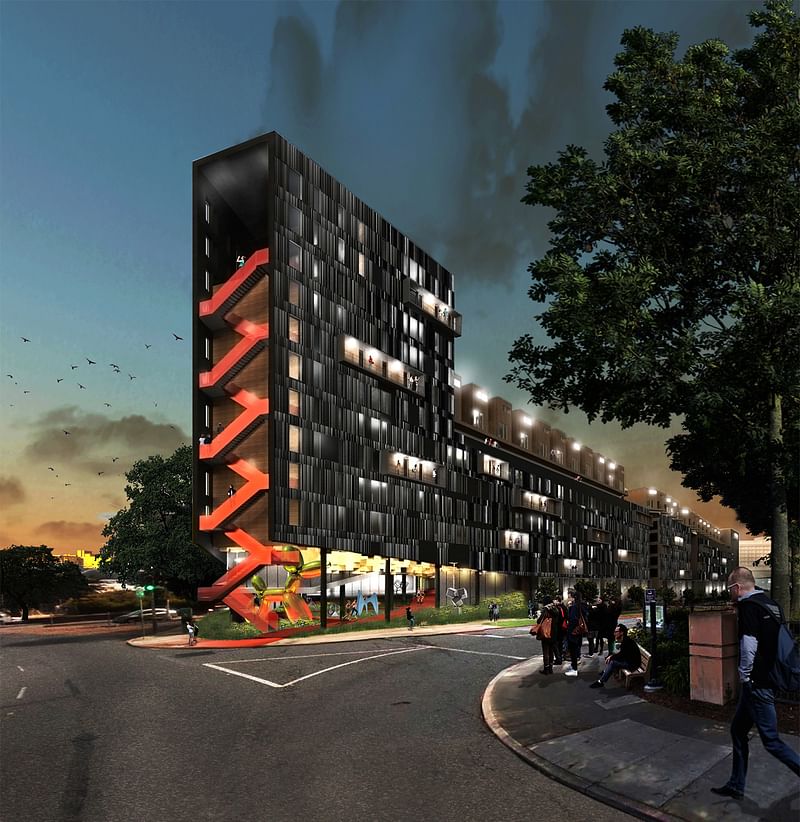
Project excerpt: “Piezein Circuit will become a fulcrum for the SFSU campus as well as the surrounding neighborhood. It sits as a hinge between a regional retail center, an underutilized lake and public park, the campus core, high density housing, and recreational facilities. We are proposing to use the pedestrian path as an architectural armature, a generator for neighborhood spaces, and a production platform for renewable energy -- all from the idea of a simple stroll.” Full project info.
STUDENTS
Honor Award: ENERGIZED CANOPY by Ecole Nationale Supérieure d'Architecture | Grenoble, France
Project Architect: Romain Dechavanne
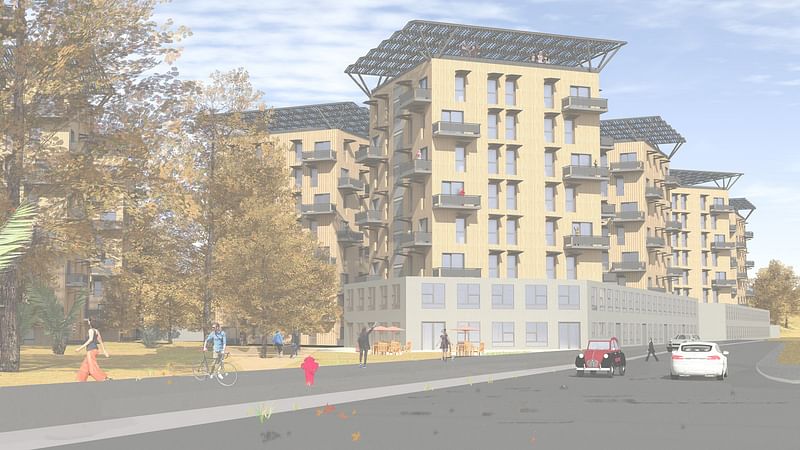
Project excerpt: “The project also aims to question our notion of comfort in a period where global warming is more and more destructive for natural ecosystems. Temperature isn’t always the same during all seasons on the outside and it should also be the same on the outside. By doing so, people will be able to need less energy and therefore less money to heat or cool their housings. Instead of having an always constant temperature of 72 degree Fahrenheit all year long, inhabitants will be invited to have 67 degree Fahrenheit in winter and 78 degree Fahrenheit in summer...” Full project info.
Merit Award: COMMUNAL OPERATIONS by Texas Tech University | Lubbock, TX
Project designer: Steven Loutherback
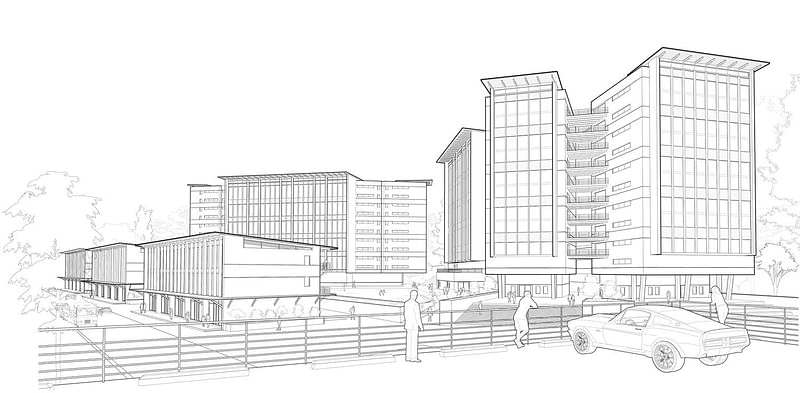
Special Recognition: SHARING & LIVING by Tamkang University | Taipei City, Taiwan
3dmodel, render, calculation, solar study: Chang, Yi-Cheng
Concept, landscape, photoshop, data, wind study: Lee, Yin-Hsuan
Detail design, water study: Shieh, Chereng-Daw
Advisor: Sung, Wei-Shiang
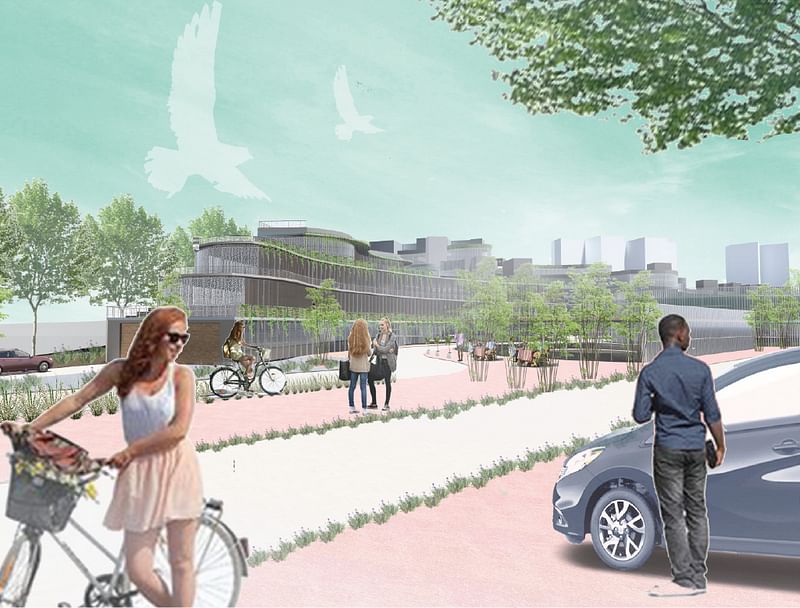
Project excerpt: “Food, clothing, households, transportation, education, entertainment are our daily routine. However, since we only have vague awareness of the energy consumption during these activities, they have lead to a big impact to our environment. In our design, we like to create a energy recycling mechanism. This mechanism not only can harvest alternative energies and transfer them into electricity but also has its social functionto help people interact with each other. We try to design a student housing community that not only encouraging residents to talk to each other, but also share with each other’s life, and interactive with surrounded neighborhood—at the same time, to be an energy self-sufficiency community.” Full project info.
All images courtesy of the Architecture at Zero competition.
RELATED COMPETITION Architecture at Zero 2016


Share
0 Comments
Comment as :